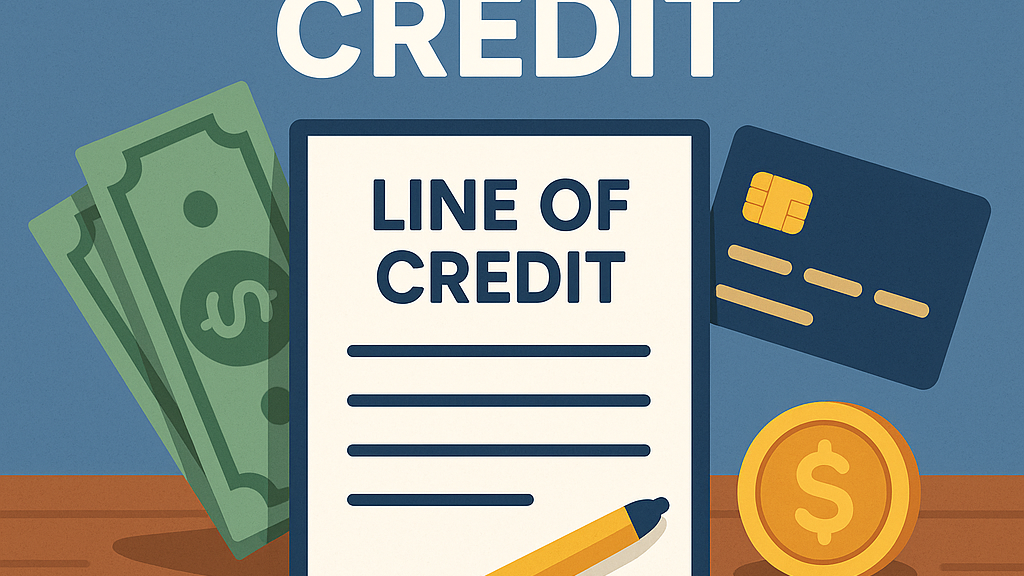
Whether you’re seeking a personal line of credit or a business line of credit, approval depends on a mix of creditworthiness, financial stability, documentation, and the lender’s risk tolerance. Below is a deep dive into what you can do to significantly improve your chances of getting approved — and potentially secure more favorable terms.
🧱 1. Strengthen Your Credit Profile
Creditworthiness is one of the most critical factors. Here’s how to build or improve your profile:
For Individuals:
- Monitor Your Credit Score: Check your FICO and VantageScore through free tools or credit card providers. Aim for 700+ for the best LOC rates.
- Pay Bills on Time: Payment history makes up ~35% of your score. Late payments, even by a few days, can lower your chances.
- Lower Credit Utilization Ratio: Keep revolving credit usage under 30% of your total available limit. Paying down cards can have a quick positive impact.
- Avoid New Hard Inquiries: Every hard credit pull can shave off points. Space out credit applications, especially before applying for a LOC.
- Fix Credit Report Errors: Incorrect late payments or balance errors? Dispute them with the three major bureaus: Equifax, Experian, and TransUnion.
For Businesses:
- Establish a Business Credit Profile: If you haven’t already, register for a D-U-N-S number with Dun & Bradstreet.
- Open Trade Lines with Vendors: Build credit history by maintaining good terms with suppliers who report to credit agencies.
- Pay Vendors Promptly: On-time (or early) payments build a strong credit record.
- Separate Business & Personal Finances: Avoid co-mingling accounts. Use an EIN for credit applications instead of your SSN where possible.
📊 2. Present Strong Financial Documentation
Your financial documents tell the lender your story. That story needs to be clear, detailed, and trustworthy.
Individuals Should Provide:
- Pay Stubs or W-2s: Show stable income and employment.
- Tax Returns: Usually the last two years.
- Bank Statements: Demonstrate consistent inflows and responsible cash flow management.
- Debt Summary: Lenders will calculate your debt-to-income ratio to assess affordability.
Businesses Should Provide:
- Profit & Loss Statement (P&L)
- Balance Sheet (Assets vs. Liabilities)
- Cash Flow Statement: Prove you can repay over time.
- Tax Returns: Often 2–3 years of business returns required.
- Accounts Receivable Aging Report: Shows when you expect cash from customers.
- Job Cost Reports: Especially important for contractors. Include backlog, margins, and burn rate.
Make sure these are organized, accurate, and professionally formatted — this goes a long way in showing that you’re a low-risk borrower.
🧭 3. Have a Clear Purpose for the Line of Credit
Lenders like to know what their money will be used for. The more strategic and specific you are, the better.
Examples:
- Working Capital Needs
- Seasonal Inventory Purchases
- Payroll Buffer for Project Delays
- Marketing and Client Acquisition
- Emergency Cash Reserve
If you’re a contractor, explain how the LOC will support bonding capacity, equipment purchases, or bridge financing between progress payments.
Bonus tip: Tie the LOC use case back to ROI or business continuity. For instance, “We plan to use the LOC to fund upfront project costs on bonded work, which pays 45 days post-invoice.”
🏦 4. Choose the Right Lending Partner
Not all lenders have the same appetite for risk or focus. You can increase your chances by targeting the right fit:
- Start with Banks You Have Relationships With: Existing history counts.
- Credit Unions & Community Banks: Often more flexible and relationship-driven.
- Online Lenders: These can be faster and more tech-friendly, but may come with higher rates.
- SBA-Backed Lines of Credit: For businesses that need help qualifying, the Small Business Administration can guarantee a portion of the loan.
If possible, get prequalified without a hard credit pull to shop rates and terms.
🛠️ 5. Offer Collateral or Consider a Secured Line
Providing collateral reduces lender risk and increases your approval chances. You may also receive a higher credit limit and lower interest rate.
Types of collateral:
- Personal LOC: Home equity (HELOC), vehicle, or cash savings.
- Business LOC: Equipment, receivables, inventory, or real estate.
Make sure the collateral has a clean title and is properly valued.
💼 6. Show Lender You’re “Lend-Ready”
Beyond documents and credit, you can boost your appeal with these best practices:
- Professional Business Plan: If your LOC is growth-oriented, show a plan with milestones.
- Contracts in Hand: Contractors should show backlog reports and signed contracts.
- Cash Flow Forecasts: Predict how and when you’ll repay draws from the LOC.
- Strong Personal Guarantees: Demonstrate “skin in the game” if you’re applying as a small business owner.
🧮 7. Understand Key Ratios Lenders Look At
Lenders use formulas to assess risk. Know and improve these before applying:

If these ratios aren’t favorable, wait to apply until they improve — or take corrective actions like paying off debt or improving receivables.
👷 Special Tips for Contractors & Construction Businesses
- Show Bonding Capacity: A line of credit often supports your ability to take on bonded projects. Highlight this.
- Emphasize Stability: Even if income is seasonal, show historical revenue trends, long-term clients, or multi-year contracts.
- Include WIP & Backlog Reports: Demonstrate consistent work and revenue inflow.
- Highlight Retainage Handling: Show how you manage deferred revenue from retention clauses.
✅ Final Thoughts
Getting approved for a line of credit isn’t just about filling out an application — it’s about telling a story of financial strength, discipline, and vision. Prepare ahead, know your numbers, and present yourself (or your business) as a low-risk, high-reliability borrower.
